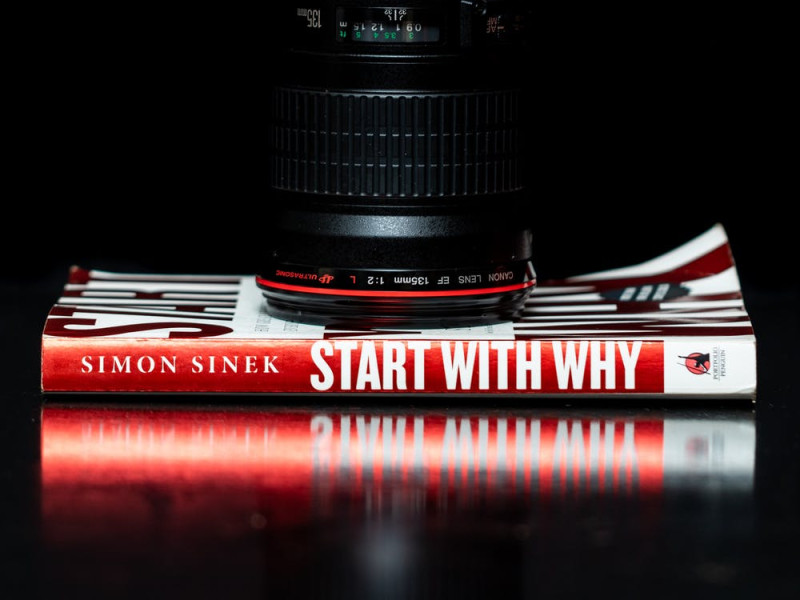





Written By Nik Koulogeorge

Written By
Published
Jun. 22, 2020
Updated
Nov. 21, 2021
"People don't buy what you do; they buy why you do it." - Simon Sinek
What a guy, right?
Simon Sinek led one of the most insightful and impactful TED Talks. It certainly struck a chord within Greek Life and has been included in most leadership conferences I have attended. (More than 100)
Let me start by saying that I like Simon's understanding of leadership and messaging. He does a great job explaining that starting at "Why?," then "How?," and finally "What?" is a recipe for marketing and planning success. Popular examples such as Apple and Martin Luther King Jr. send the message home.
But, I observe an issue with this TED Talk and the following Sinek has amassed in the years since.
I have lost track of the number of times I've heard someone attempt to explain the "Golden Circle" and completely dismiss the "How?" and "What?" parts, but it happens ... a lot ... like almost every time.
The reason is understandable. Sinek claims that most organizations overlook their "Why?" and many who follow his advice overcorrect. Nowadays "Why?" is all we talk about. For those too lazy to watch the video, here's a breakdown of how the "Golden Circle" works:
Determine your "Why?" (Why does your organization or product exist in the first place?)
Develop a "How?" (How does your organization bring your "Why?" into being?)
Produce the "What?" (Your organization or product)
Apple, one of Sinek's preferred examples, does not just say, "We do everything to be different" and magically obtain a killer product. They don't just make their products "user friendly" by willing user-friendliness into existence.
Being a different consumer electronics company is their "Why?," sure, but that took all of maybe 1 minute for Apple's founders to determine. Anyone can make an empty declaration. . . just follow the National Panhellenic Council on Twitter and you can retweet a bunch of meaningless sales speak.
How did Apple become a different consumer electronics company? It's simple: Apple's competitors focused on pushing consumer electronics to their technical limits: More processing power, more programs, better graphics, and dozens of options to upgrade a device.
Apple; however, focused on pushing consumer electronics to the limits of practicality. How could the design of the hardware and software make their product easy to use, out of the box.
"Design is not just what it looks and feels like. Design is how it works"
Steve Jobs
Steve Jobs - the brainchild behind Apple's marketing and uniqueness - was obsessed with the curves of his Mercedes Benz. He felt they gave his vehicle a smooth, effortless look that made his ride more enjoyable than any other luxury vehicle. He loved that the interior of his vehicle matched its exterior in taste and design. Steve Jobs noticed that computers, and their software, were generally ugly.
He hired engineers to give the same curvature and simplicity to his computer products and the operating system within each of those computer products. Just as one would expect the interior of a Mercedes Benz to compliment the design of its exterior, so too did the software of an Apple computer match its hardware.
Apple paid careful, obsessive attention to "how" they do things differently ("Why?") to achieve approachable computers ("What?"). When Steve Jobs was fired from Apple, they lost sight of the "How?" and profits plummeted. Then, when Jobs was re-hired, he slimmed down the product line and introduced the colorful iMacs and iBooks of the '90s. Then came iPods, iTunes, iPhones, and so on. Apple products are as much a status symbol as they are consumer electronics devices because their "Why?" and "How?" are in total alignment.
Rather than pay equal attention to "Why?", "How?", and "What?", we now obsess over just "Why?". We teach students to start with "Why?" and promise that things will be better for them. Then, after we have focus-grouped and turned our "why" into some fancy version of "being betterer," we consider whatever we churn out (the "Whats?") as progress - regardless of their effectiveness.
The strange thing is that the "How?" and "What?" rarely change as a result of these knock-off "Start With Why" workshops. So everyone has a new reason for doing what they do exactly as they did it before.
Want to know why there is so much turnover in fraternity/sorority professions? Care to wonder why a school can't seem to keep policies or programs in place for longer than a few years without major overhauls? It's because the people in charge are asked only to figure out new reasons "Why?" writing new rules is the only way to change the world.
The fix is simple: spend more time in the painstaking, difficult exploration of the "How?" Knowing why you do something is critical, but it's not that hard to figure out. Spend more time in contemplation - or tinkering or whatever floats your boat - to determine how whatever you do is uniquely tied to why you do it.
With every sexual assault, shooting, hazing incident, discrimination incident, our audience demands immediate action and we cave, often doing nothing but suppress the problem. We do not have a specialized process to handle things in a fraternity way, or we might be able to fix problems instead of just responding to them.
As people who claim to train America's future leaders, we should find value in restraint and patience. We should teach our students that it is okay not to cave to the pressure of an audience. We should teach our students to be thoughtful not only in why they do a thing but in how they go about doing it.
Until we stop ignoring "How?" at the expense of the more exciting "Why?", we will continue to tread water. Our greatest challenges cannot be overcome by finding new reasons to do what we have been doing since 18-whenever-your-fraternity-was-founded. We will improve the fraternity experience by exploring "How?" fraternities can do things in ways no other organization can.
"It was the 'I Have a Dream' speech, not the 'I Have a Plan' speech" - Simon Sinek
What Mr. Sinek couldn't capture with his clever, share-worthy quote (not for lack of knowledge, but to the detriment of his following), is that the "I Have a Dream" speech was a part of a plan. That plan took far more time, thought, and effort than determining the dream itself.
Help keep it going and growing by contributing as little as $2. (Links below will take you to a secure payment portal via Stripe)
A free way to support: Subscribe to the Fraternity Man newsletter for [very occasional] updates and giveaways.